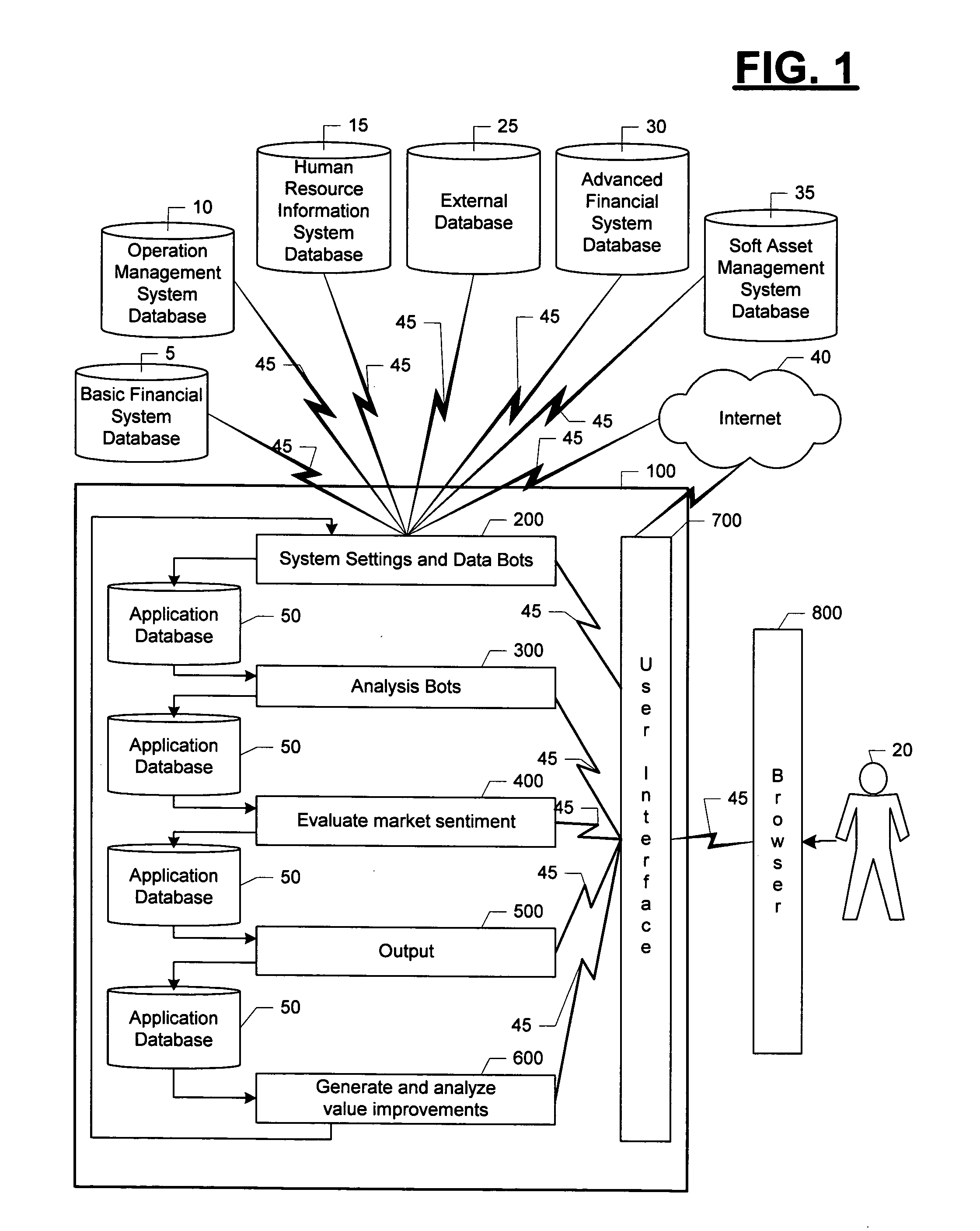Automated method of and system for identifying, measuring and enhancing categories of value for a value chain
a value chain and value technology, applied in the field of business valuation, can solve the problems of inability to provide a framework for analyzing “virtual value chains" and no known method or system for systematically evaluating the value of these new types of organizations, and achieve the effect of improving the value of a commercial enterprise and facilitating its us
- Summary
- Abstract
- Description
- Claims
- Application Information
AI Technical Summary
Benefits of technology
Problems solved by technology
Method used
Image
Examples
Embodiment Construction
[0045]FIG. 1 provides an overview of the processing completed by the innovative system for business valuation. In accordance with the present invention, an automated method of and system (100) for business valuation is provided. Processing starts in this system (100) with a the specification of system settings and the initialization and activation of software data “bots” (200) that extract, aggregate, manipulate and store the data and user (20) input required for completing system processing. This information is extracted via a network (45) from a basic financial system database (5), an operation management system database (10), a human resource information system database (15), an external database (25), an advanced financial system database (30), soft asset management system databases (35) and the internet (40). These information extractions and aggregations may be influenced by a user (20) through interaction with a user-interface portion of the application software (700) that me...
PUM
 Login to View More
Login to View More Abstract
Description
Claims
Application Information
 Login to View More
Login to View More - R&D
- Intellectual Property
- Life Sciences
- Materials
- Tech Scout
- Unparalleled Data Quality
- Higher Quality Content
- 60% Fewer Hallucinations
Browse by: Latest US Patents, China's latest patents, Technical Efficacy Thesaurus, Application Domain, Technology Topic, Popular Technical Reports.
© 2025 PatSnap. All rights reserved.Legal|Privacy policy|Modern Slavery Act Transparency Statement|Sitemap|About US| Contact US: help@patsnap.com



